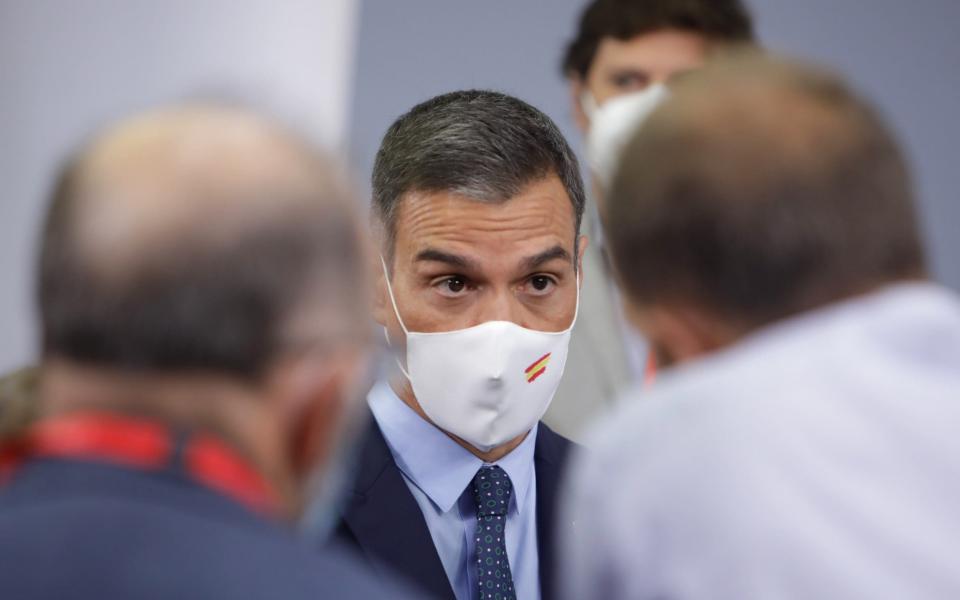Is Madrid leading Spain and Europe into a Covid second wave?

Coronavirus outbreaks in Madrid are driving the country towards a second wave of infections amid fears across Europe over climbing caseloads.
Spain's surge in new cases is a growing concern for the continent at a crucial time with the arrival of autumn and the reopening of schools and busier workplaces.
There are already fears that the Madrid region is on the cusp of a destructive second wave – one that could easily be extended around the rest of Spain - and potentially its neighbours - due to the capital’s role as a transport and socioeconomic hub.
According to data from the European Centre for Disease Prevention and Control, Spain has accumulated more than 103,000 confirmed cases over the past two weeks, compared to 62,000 in France, the only other European country that comes close.
Increased testing has played a part in this; Spain has reached more than half a million tests per week, but France is up to 900,000. This is because the virus is spreading faster in Spain, with 212 cases per 100,000 inhabitants over the past 14 days, a greater rate than in the US, more than double that of France and nine times Italy’s rate of transmission.
In March and April Madrid was the scene of Covid carnage unrivalled across Spain.
In the week up to September 1, Spain’s health ministry confirmed 49,000 new cases. Madrid, with 14 per cent of the Spanish population, accounted for just under 15,000, almost a third of the total.
Madrid has also taken an unwanted lead in terms of pressure on hospitals, with more than 2,000 Covid patients in the region’s wards comprising 16 per cent of capacity.
Catalonia is seeing its summer spike level off, and Covid hospital occupancy stands at five per cent.

Public health experts and health sector workers point to basic flaws in Madrid’s efforts to battle contagion, particularly a lack of contact tracers after months of gearing up for the anticipated autumn campaign.
The accusation is that Madrid’s regional government has again let the virus slide out of control – this time without the excuse of lack of knowledge or days in which to prepare.
Fernando Simón, the Spanish government’s health emergency chief, noted this week that Madrid’s health system was already coming “under severe strain”. On Tuesday, Prime Minister Pedro Sánchez underlined the point: “We are worried about the direction in Madrid.”
Madrid has emerged from Spain’s 17 regions as the area with highest transmission levels, with 465 cases per 100,000 inhabitants in the past 14 days. This is more than double Spain’s national average.
But, perhaps more worryingly, hospitalisations and deaths are also ticking up. There were 1,832 patients in hospital on August 31, up from 169 one month before. Intensive care patients had risen from 32 to 211. Fourteen people had died in the last 24 hours, compared with 2 on July 31.
Spain’s surge compared with neighbouring countries has been partially explained by the country’s highly sociable traditions, particularly as young people emerged from a three-month lockdown into warm summer nights. But Europe’s strictest confinement measures reduced transmission to a virtual standstill by mid-June and should have given administrations time to prepare for an uptick.
“The second wave will not be as bad, but it could still be catastrophic,” said Dr Pilar Serrano, a public health lecturer from Madrid’s Autónoma University, adding that the lessons learned in terms of hospital logistics, treatment and social awareness should prevent a healthcare collapse on the same scale as in the spring.
“But it is unacceptable that we should have high levels of death again; it’s unforgiveable knowing that these are deaths that could have been prevented.”
Dr Serrano is also the secretary of the AMASAP Madrid public health association, which is one of several organisations promoting a manifesto of demands on the regional government to ward off any repeat of the harrowing scenes from March and April when thousands of elderly patients were not admitted to hospitals.
Signed by more than 600 health professionals, the manifesto demands that Madrid triples its number of contact tracers to at least 1,700, as well as strengthening primary healthcare centres, some of which are closed or operating at a low level due to a centralisation of resources at main hospitals during the spring crisis. Spain's overall death toll stands at about 45,000.

AMASAP also criticises what it calls random testing, causing queues of people to form at Madrid’s understaffed health centres, with the results often taking days to be returned to patients and inadequate tracing meaning that such information on asymptomatic cases is virtually useless. People should also be offered spaces in which to self-isolate, the association says, given that many live in cramped an overcrowded housing.
The measures would only cost €400 million, the manifesto says, with the Madrid regional government having been guaranteed more than €2 billion for extra Covid resources by Spain’s central administration.
Madrid’s doctors, hailed as heroes as locals cheered them on from their balconies during the lockdown, have no wish to return to those days when dark drama played out in their wards and clinics.
“Deciding who can get intensive care and who can’t leaves a mark on health workers. Just thinking they might have to face a similar situation is creating panic,” said Fernando García, an epidemiologist and AMASAP’s spokesman, noting that with more than 200 Covid patients, Madrid’s intensive care wards are already at more than 40 per cent capacity.

 Yahoo News
Yahoo News 